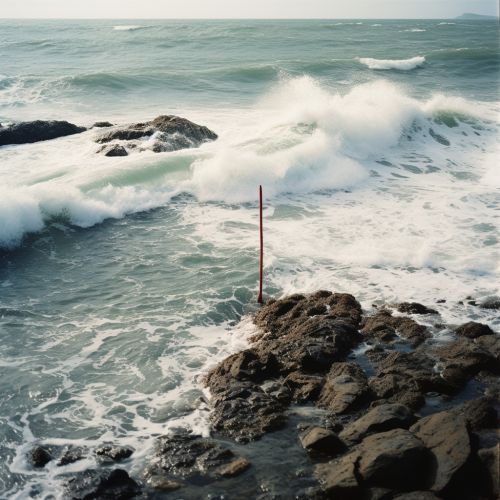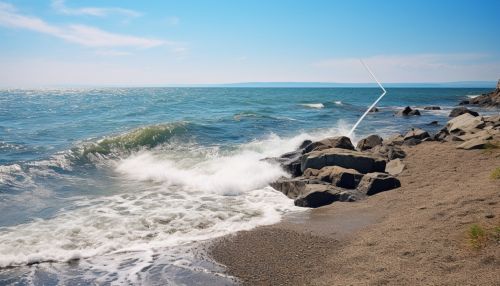Longshore Current
Introduction
The longshore current, also known as littoral current, is a coastal current that flows parallel to the shoreline, within the littoral zone. It is generated by waves breaking at an angle to the shoreline, a phenomenon known as wave refraction. This current is a significant component of the nearshore coastal processes, playing a crucial role in the transport of sediment along the coast, a process termed longshore drift.


Formation of Longshore Current
Longshore currents are formed when waves approach the shoreline at an angle, rather than directly. This oblique approach results in the part of the wave that reaches shallow water first slowing down due to friction with the sea floor, while the part of the wave still in deeper water continues at its original speed. This difference in speed causes the wave to bend, or refract, and break at an angle to the shoreline. The energy of the breaking wave pushes water up onto the beach at the same angle. This water then flows back to the sea directly downhill under the force of gravity, creating a current that flows parallel to the shoreline.
Characteristics of Longshore Currents
Longshore currents can vary in speed and strength, depending on a variety of factors. These include the size and energy of the breaking waves, the angle at which the waves approach the shoreline, the slope and composition of the beach, and the tidal range.
The speed of a longshore current is typically around 0.5 to 1 meter per second, but can reach up to 2 meters per second in strong conditions. The direction of the current is determined by the predominant direction of the incoming waves, which is influenced by local wind conditions and the orientation of the coastline.
Role in Coastal Processes
Longshore currents are a key driver of coastal processes, particularly those related to the movement of sediment. As the current flows parallel to the shoreline, it carries with it sediment that has been eroded from the beach by wave action. This sediment is transported along the coast in a process known as longshore drift.
Longshore drift, in turn, is responsible for the formation of many coastal features, including spits, barrier islands, and tombolos. It also plays a significant role in the ongoing changes to a coastline's shape and form, contributing to processes such as beach erosion and accretion.
Impact on Human Activities
Longshore currents can have significant impacts on human activities along the coast. They can pose a hazard to swimmers and surfers by carrying them down the beach away from their starting point, a phenomenon known as "drift". This can be particularly dangerous in areas with strong currents and/or large waves.
Longshore currents also play a role in the deposition of pollutants and other materials along the coast. Materials discharged into the sea can be carried along the coast by the current, potentially impacting a much larger area than the initial discharge point.
In terms of coastal management, understanding longshore currents is crucial for effective beach nourishment programs and for the design of coastal structures such as groynes and breakwaters, which are used to manage sediment transport and reduce beach erosion.
